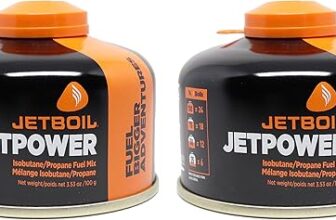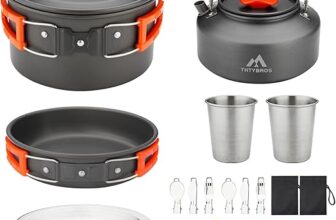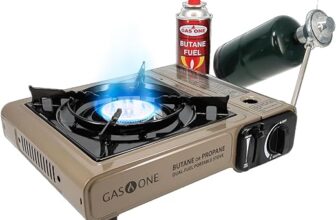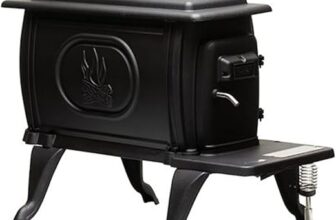
When selecting the right sleeping bag for outdoor adventures, two popular options often come into consideration: the FARLAND 20℉ Sleeping Bag and the Lightweight Waterproof Sleeping Bag. Each is designed with specific features to cater to different needs and preferences among campers and hikers. This comparison aims to explore their key characteristics, such as insulation capability, weight, compressibility, and durability, helping outdoor enthusiasts make an informed choice based on their unique requirements and conditions.
**Cool Weather

The FARLAND Sleeping Bags offer durable, lightweight comfort for adults, teens, and kids, ideal for cool to cold weather camping and outdoor adventures. With a temperature rating of 20℉ and waterproof material, these sleeping bags ensure a cozy sleep in various conditions and are conveniently portable with a compression sack.
**Cold Weather

The Lightweight Waterproof Sleeping Bag is designed for three-season use, comfortably accommodating campers up to 5 feet 11 inches tall, with a compact pack weight of 3.3 lbs. Made from high-quality materials, it features a thoughtful design to ensure warmth and comfort for outdoor adventures.
FARLAND 20℉ Sleeping Bag
Temperature Rating
20 to 62℉ (-7 to 17℃)
Pack Weight
4.5 lbs
Fill Material
Polyester Fibre (400GSM)
Design Shape
Available in Envelope and Mummy Shape
Dimensions
29.5 by 86.6 inches (Envelope), 33.5 by 86.6 inches (Mummy)
Lightweight Waterproof Sleeping Bag
Temperature Rating
50 to 68℉ (10 to 20℃)
Pack Weight
3.3 lbs
Fill Material
Hollow Cotton
Design Shape
Rectangular Shape
Dimensions
31.5 by 86.6 inches
FARLAND 20℉ Sleeping Bag
Lightweight Waterproof Sleeping Bag
FARLAND 20℉ Sleeping Bag
Lightweight Waterproof Sleeping Bag
Side-by-side comparison


Unique Selling Points (USPs)
FARLAND Sleeping Bags 20℉
- Versatile Size Options: Fits adults, teens, and kids, making it family-friendly.
- Temperature Rated for 3-4 Seasons: Suitable for various weather conditions including chilly nights.
- Portable Convenience: Includes a compression sack for easy transport and storage.
- Waterproof Design: Protects against moisture, enhancing outdoor experiences.
Sleeping Bags for Adults Backpacking
- Cold Weather Ready: Engineered specifically for cold conditions helping keep warmth.
- Universally Adjustable Size: Offers various sizes catering to different user needs.
- Lightweight yet Durable: Designed for portability without compromising quality.
- Multipurpose Use: Suitable for a range of activities from hiking to hunting.
Similarities
- Both sleeping bags are lightweight and portable.
- They employ waterproof materials to withstand outdoor moisture.
- Each product caters to campers and outdoor enthusiasts.
Pros and Cons
FARLAND Sleeping Bags 20℉
Pros:
- Family-friendly sizing options
- Great insulating properties for cool to moderately cold weather
- Water-resistant materials
Cons:
- May not be ideal for extremely low temperatures.
Sleeping Bags for Adults Backpacking
Pros:
- Enhanced warmth for serious cold weather conditions
- High versatility across different outdoor activities
- Options for personalized sizing
Cons:
- Often targeted more at adults; may not cater to families with kids.
Use Cases
- FARLAND Sleeping Bags 20℉: Ideal for family camping trips, outings in moderate weather, or casual hiking.
- Sleeping Bags for Adults Backpacking: Best suited for colder climates during outdoor adventures, such as hunting trips or intensive hiking expeditions.
Conclusive Assessment
A clear winner does not emerge in this comparison as it largely depends on specific user needs. If you are looking for an all-inclusive bag for family use with generous sizing options, the FARLAND Sleeping Bags 20℉ would be advantageous. However, for individuals seeking a sleeping bag designed for colder weather and a more rugged outdoor experience, then the Sleeping Bags for Adults Backpacking would serve better.
Final Summary
Both sleeping bags offer commendable features suitable for different audiences. The FARLAND Sleeping Bags 20℉ delivers versatility and family-oriented sizing, while the Sleeping Bags for Adults Backpacking leans towards meeting specialized needs for colder environments. Depending on whether you prioritize versatility or cold-weather performance, either product can be a worthy investment for your outdoor excursions.


Guidelines for Comparing Sleeping Bags
When it comes to choosing the best sleeping bag, it’s crucial to evaluate various key factors that can affect your camping or hiking experience. Below are general guidelines and specific points to help you make a comprehensive comparison between popular sleeping bags, such as the ‘FARLAND 20℉ Sleeping Bag’ and a ‘Lightweight Waterproof Sleeping Bag’.
1. Temperature Rating
Overview
The temperature rating indicates the lowest temperature at which the sleeping bag will keep you warm.
Key Points:
- FARLAND 20℉ Sleeping Bag:
- Rated for 20℉ (-6℉) conditions.
- Suitable for three-season camping.
- Lightweight Waterproof Sleeping Bag:
- Typically rated for higher temperatures like 35℉ or above.
- More appropriate for summer use.
Considerations:
- Assess the climate where you plan to use the sleeping bag.
- Choose a temperature rating that comfortably exceeds the coldest predicted temperatures.
2. Insulation Type
Overview
There are two main types of insulation: synthetic and down.
Key Points:
- FARLAND 20℉ Sleeping Bag:
- Uses synthetic insulation, providing excellent warmth even when wet.
- Generally more affordable and easier to care for.
- Lightweight Waterproof Sleeping Bag:
- May contain down insulation, which is lightweight and highly compressible, but less effective if wet.
Considerations:
- Evaluate whether you’ll be in damp or wet conditions, which might dictate your choice of insulation type.
3. Weight and Packability
Overview
The weight and packability of a sleeping bag affect how easily you can transport it.
Key Points:
- FARLAND 20℉ Sleeping Bag:
- Heavier compared to lighter models; less ideal for backpackers focusing on ultralight gear.
- Packs moderately well but not as compact as down-filled models.
- Lightweight Waterproof Sleeping Bag:
- Specifically designed to be lightweight and easily packable for travel.
- Usually compresses smaller due to down fill.
Considerations:
- Determine your priority: Do you prioritize weight and compactness, or do you need extra insulation?
4. Waterproofing and Moisture Resistance
Overview
Waterproofing is crucial if you expect rain or moisture.
Key Points:
- FARLAND 20℉ Sleeping Bag:
- Water-resistant but may require additional protection (like a rain cover).
- Ideal for moderately damp conditions.
- Lightweight Waterproof Sleeping Bag:
- Typically designed with waterproof shells, offering higher protection against moisture.
Considerations:
- Assess the typical weather conditions and terrain you’ll be facing.
5. Shape and Size
Overview
Sleeping bags come in various shapes (e.g., rectangular, mummy) and sizes.
Key Points:
- FARLAND 20℉ Sleeping Bag:
- Features a rectangular shape, allowing more room for movement.
- Generally recommended for car camping rather than backcountry.
- Lightweight Waterproof Sleeping Bag:
- Often comes in a mummy shape for added insulation efficiency.
- Tends to provide a snugger fit, which is beneficial in cold temps.
Considerations:
- Choose a shape that balances comfort and heat retention according to your preferences.
6. Price and Value for Money
Overview
The cost of a sleeping bag can vary widely based on brand, features, and materials.
Key Points:
- FARLAND 20℉ Sleeping Bag:
- Affordable and offers good value for the features provided.
- Great for beginners or casual campers.
- Lightweight Waterproof Sleeping Bag:
- May command a premium price due to high-quality materials and construction.
- Worth the investment for frequent or serious backpackers.
Considerations:
- Factor in frequency of use and your budget. Generally, investing in quality pays off.
Expert Answers to Your Sleeping Bag Questions
The key differences between the FARLAND 20℉ sleeping bag and the lightweight version typically focus on their design, insulation, weight, and intended use.
- Temperature Rating: The FARLAND 20℉ sleeping bag is designed to be suitable for cooler weather, providing warmth down to 20 degrees Fahrenheit. In contrast, the lightweight version may have a higher temperature rating, allowing for comfortable use in milder conditions.
- Insulation: The FARLAND 20℉ sleeping bag generally features thicker insulation to retain heat during cold weather. The lightweight version, however, may utilize less insulation material, making it more compact and suitable for warmer weather or summer camping.
- Weight: As suggested by its name, the lightweight version is specifically designed to be lighter in weight, making it easier to carry during backpacking trips. The FARLAND 20℉ sleeping bag might be heavier due to the additional insulation and material used for cold weather protection.
- Packability: The FARLAND 20℉ sleeping bag usually comes with a compression sack for portability, but its bulk may mean it takes up more space than the lightweight version when packed. The lightweight product will likely offer superior packability, allowing for easier storage in a backpack.
- Versatility: The FARLAND 20℉ sleeping bag is intended for 3-4 season camping, whereas the lightweight model may be more specialized for summer or warmer purposes, reducing its versatility for colder weather camping.
Overall, the main distinctions lie in insulation and warmth, weight, and seasonal suitability. When choosing between the two, consider the climate you will encounter and your need for portability.













Just a tip: if you’re camping in really cold weather, always go for a sleeping bag rated a bit lower than the temperature you expect. It makes a massive difference! I learned that the hard way on my first trip.
Great tip! Many people underestimate how much insulation they need. Thanks for sharing your experience!
I’ve got the Lightweight Waterproof Sleeping Bag, and it’s been a lifesaver for me! Super easy to pack and really holds up in rainy weather. Highly recommend it for backpackers!
Both bags seem solid, but I found that the FARLAND 20℉ was way better for retention of warmth during chilly nights. I was camping in 15℉ weather and felt snug as a bug!
One last thing, always remember to air out your sleeping bag after each trip. It keeps it fresh and helps maintain the insulation! Happy camping, everyone!
Thanks for the comparison! I totally agree that the FARLAND 20℉ seems like a great option for colder nights. I’ve used it on a few camping trips and stayed cozy every time!
If you haven’t tried it, the Teton Sports Celsius Sleeping Bag is another awesome option! It’s super affordable and keeps you warm without being too heavy. Perfect for family camping trips!
Thanks for the recommendation! Teton Sports has a solid reputation; I’ll definitely check it out!